Lessons from Nadella: how cricket can win staff back to the office and transform corporate culture
With the world cup in full swing – and India the favourites – Microsoft chief executive Satya Nadella is using one of his passions to help transform the tech giant.
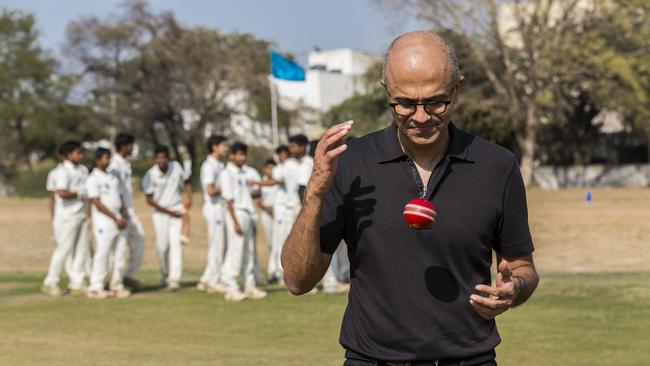
On a crisp autumn day, there are no dark clouds hovering over Seattle to serve as a warning for the city’s famed heavy rainfall. There is also no wind, allowing for an odd sound to drift over Microsoft’s sprawling headquarters about a 30-minute drive away in Redmond.
You could be forgiven for thinking the thwack of a leather ball hitting a wooden bat would be a sure sign of a baseball match being played, but not today. Despite the classic northwest American backdrop of Douglas fir trees and mountains, cricket is taking centre stage – leaving spectators hit for six.
Not one but two groups of Microsoft employees – mainly South Asian expats – have taken over the company’s soccer field for a game of lunchtime cricket. If that’s occupied, they also seek out Microsoft’s softball diamonds.
But soon, they will have a ground of their own – a full-sized oval, wicket and stumps – as part of Microsoft’s $US1bn ($1.58bn) redevelopment of its global headquarters. It will be one of the rare dedicated cricket pitches in the baseball-loving US, but reflects the increasing diversity among Microsoft’s employees and the overall tech sector.
Crucially, it’s about creating an environment that attracts workers back to the office – a dilemma facing Australian employers, from Commonwealth Bank to Crown Resorts, as they seek to reverse the pandemic trend of working from home and re-energise central business districts.
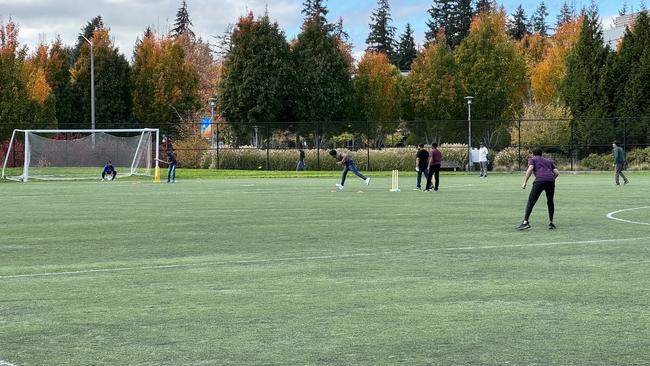
So what can they learn from the US? Microsoft has taken a different strategy to another Seattle-based tech giant, Amazon.
At first glance the two companies’ headquarters seem worlds apart. Amazon has 40 towering buildings that house about 50,000 employees in central Seattle. The vibe is very much urbane, with stores beneath the corporate skyscrapers selling anything from hand-blown glassware to ginger beer, while more than 10,000 dogs are registered to join their Amazonian owners at work.
Microsoft, meanwhile, is based in the suburbs with low-rise buildings spread across 200ha. And there is no policy to allow dogs in the office.
But the net result is the same. Microsoft has heard what its staff want from their workplace so they can perform at the optimum. This ranges from the food on offer at its cafeterias – it’s not just general Indian or Chinese, but drills down to regional cuisine from those countries – to its sport fields.
While such measures make working from the office more appealing – and could give ideas to some of Australia’s biggest employers, whether it be NAB chief executive Ross McEwan, who has mandated his senior leaders work from the office five days a week, or Mineral Resources outlawing working from home completely – Microsoft has found that Covid-19 sparked a paradox.

According to its Work Trend Index, 70 per cent of employees want flexible work to stay, but more than 65 per cent are craving more in-person time with their teams.
“We’re not the same company that we were prior to the pandemic,” says Dawn Klinghoffer, Microsoft’s head of people analytics. “Back then, 61 per cent of teams at the company were all in the same location; today that number is 27 per cent. And research show that 70 per cent of managers at Fortune 100 companies have at least one remote team member.”
To this end, Microsoft has refined its hybrid work policy to three specific moments when in-person time is most beneficial: strengthening team cohesion; onboarding to a new role, team, or company; and kicking off a project.
But ultimately, whichever model an employer adopts, it comes down to the problem they are trying to solve within their particular organisation.
This is where cricket becomes more than just a lunchtime activity at Microsoft. It has managed to weave itself into the company’s cultural transformation. And with the world cup in full swing – and India the favourite – it’s no wonder it is doubling down on its strategy.
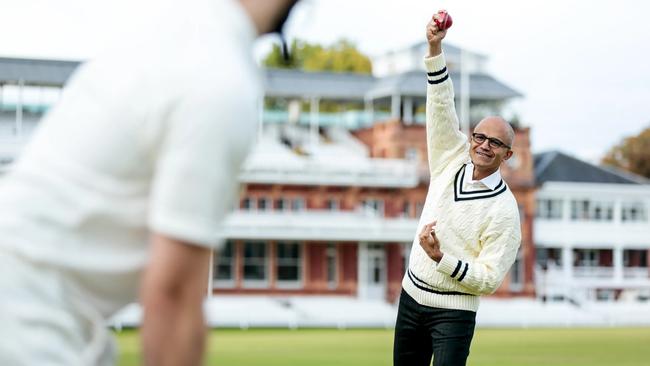
It began when Satya Nadella received a call to say that he would succeed Steve Ballmer as Microsoft’s third chief executive, and oddly again in his hands was a slice of Australia that would shape his tenure at the tech behemoth.
It was late January 2014, the middle of the North American winter, when John Thompson, the Microsoft director leading the search for its next CEO, called Nadella and asked if he was sitting down.
“I was not,” Nadella recalls. “In fact, I was calmly playing with a Kookaburra cricket ball.”
Kookaburra has become a sporting phenomenon. The Australian-owned company still hand-stitches its leather turf balls in Melbourne and has gained a global reputation for surviving in rough conditions, with a wider seam and thicker thread.
So it’s no surprise that, given the challenges a chief executive of a $US2.44 trillion company faces daily, a Kookaburra cricket ball is one of Nadella’s prized possessions and takes pride of place in his office to this day.
In his book, Hit Refresh, Nadella reveals how he “calmly plays” with his Kookaburra cricket ball when he is talking on his work speakerphone – as he was the day when Thompson told him he had been chosen to lead Microsoft.
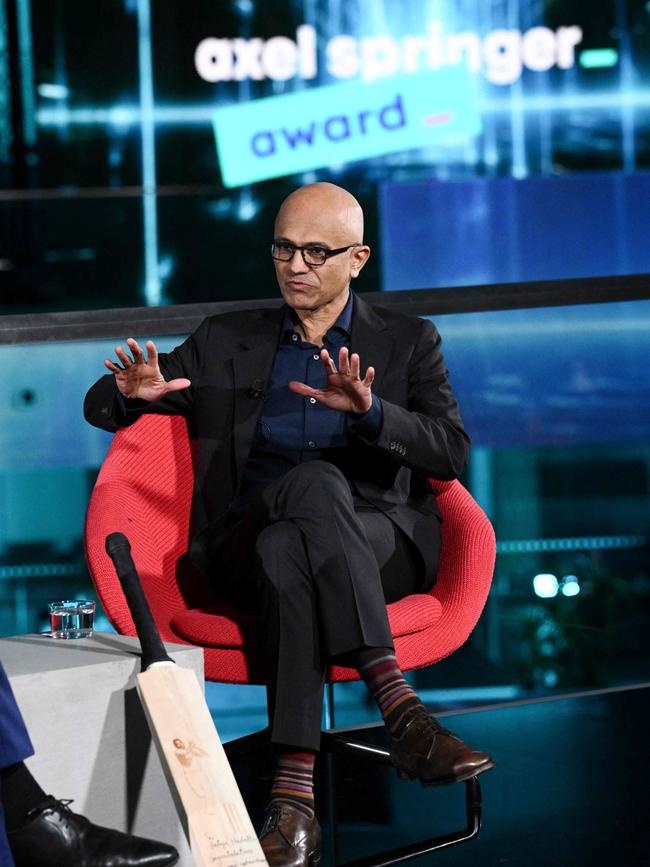
At the time of Thompson’s call, Nadella is quick to highlight, Microsoft was in trouble. “Innovation was being replaced by bureaucracy. Teamwork was being replaced by internal politics. We were falling behind,” he says in his book.
Microsoft even offered a course called precision questioning, which essentially trained people to have arguments with each other, with the goal of being asked question after question until the recipient would give up and say “I don’t know”.
To ignite a cultural change, Nadella cites three role models who shaped him to become the man he is: his father, who was a civil servant with Karl Marx leanings; his mother, who was a Sanskrit scholar; and Indian cricket great ML Jaisimha. The latter had more appeal to Nadella growing up, the Microsoft chief describing himself as an “obsessed cricket fan who long ago dreamed of becoming a professional player”.
Despite his cricket ambitions eventually taking a back seat to software engineering, the sport is still one of his passions. So much so that he was one of the investors to tip $US120m into aiding cricket’s expansion in the baseball-loving US. The investment, made late last year, has paved the way for the first professional T20 league in the US, with Nadella co-owner of one of teams, the Seattle Orcas.
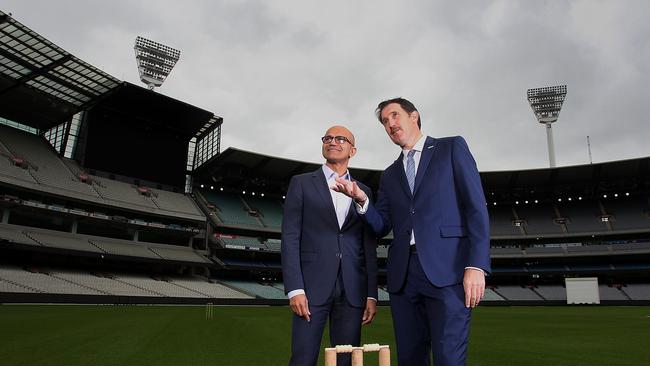
When it comes to competing with baseball, Nadella – who played as an off-spin bowler – goes straight for the raw numbers. “Cricket attracts an estimated 2.5 billion fans globally, compared with just half a billion baseball fans,” he says.
But he believes there is room for both, and more importantly chief executives can learn from the two sports. “Both are beautiful sports with passionate fans and a body of literature brimming with grace, excitement and the complexities of the competition,” he adds, highlighting Joseph’s O’Neill’s novel Netherland.
“O’Neill describes the beauty of the game, its 11 players converging in unison toward the batsman and then returning again and again to their starting point, ‘a repetition or pulmonary rhythm, as if the field breathed through its luminous visitors’. I think of that as a metaphor of the cricket team now as a CEO when reflecting on the culture we need in order to be successful.
“Microsoft has been at its best when it connects passion to a broader purpose: Windows, Office, Xbox, Surface, our servers and the Microsoft Cloud: all of these products have become digital platforms upon which individuals and organisations can build their own dreams.”

